#saturn emits rays
Explore tagged Tumblr posts
Text

Yeah
#arcane#arcane x reader#vi x reader#arcane vi#caitvi#caitlyn x reader#arcane caitlyn#saturn emits rays
2K notes
·
View notes
Text
I’m doin this but I’m really smol and I wanna show you
Whenever I talk about whatever media I’m into at the moment imagine I am presenting the characters to you like this

#I’m head butting your leg#LOOK#*head butt*#saturn emits rays#the band ghost#papa emeritus iv#namelessghouls
107K notes
·
View notes
Text

Lord Surya (Sun god) on his Chariot Talon Abraxas
The Horses of Sun God’s Chariot
In general, the Sun God is envisioned in the form of a person sitting on a chariot drawn by seven horses with its reins in the hands of charioteer Aruḍa (who is devoid of thighs). However, to clear the doubts and various questions that arise in our minds with regard to the Sun God, His chariot with seven horses and others, one has to do an in-depth study of Vedic scriptures, Purāṇas and other literature.
It is customary to praise the Sun god with the mantra ‘saptāśva rathamārūḍham pracaṁḍam kaśyapātmajam śvēta padmadharam dēvam tam sūryam praṇamāmyaham‘ – Meaning ��my salutations to the Sun God, who rides on a chariot with seven horses, the brightest of lights, son of Sage Kashyapa, and who holds the white lotus flower’ (Sūryāṣtakam 2nd Mantra).
1. Let us now study the interesting features of portion of the above mantra, the ‘saptāśva rathamārūḍham’. Transmitting (emitting) is the ‘characteristic feature of the light’. The source of this light is Prabhakara, prabhām prakāśam karōti, means Sūrya; He who provides light. ‘Aśva‘ means ‘ray of light’. Like a ray of light, a horse also has the ‘characteristic feature of speeding’. This is the reason the rays of the Sun are depicted as horses. Aśnute vyāpnōti sarvatra, means spreading itself, wave, Agni, Sūrya and others. Also, it is typical to the nature of light.
2. Sapta yuṃjaṃti rathamēkacakramēkō aśvō vahati saptanāmā – This is a Ṛk revealed in the Ṛgveda Saṃhita (1-164-2) and also in the Taittirīya Āraṇyaka [3-11(27-28)] that ‘the chariot of the Sun God is with one wheel drawn by a single horse having seven names viz. Ārōga, Bhrāja, Paṭara, Pataṃga, Swarnara, Jyōtiṣmān, and Vibhāsa [Taittirīya Āraṇyaka 1-7(1)] providing illumination to heaven and earth and yielding vigor and power’. Sapta diśō nānāsūryāḥ, Sapta hotāra ṛtvijaḥ [Taittirīya Āraṇyaka 1-7(24)] – This can be opined that the Sapta Sūryas constitute Sapta Ṛtviks or priests to perform yajñas.
3. The movement of the Sun is also related according to astronomy. The chariot of the Sun is drawn by seven horses. This can be symbolized with a rainbow. It is the appearance of chromatic light. The saptavarṇas are the saptaśvas. The twelve leaves on the chariot can be related to the twelve months or twelve constellations in a year.
4. We consider both sunrise and sunset for a day, which are bracketed into weeks, months and years for basic calculations (source: Sūrya Siddhānta). Āditya, the timeless form, is a deity who goes around the universe with emitting light. The body and the mind are energized by assimilating Sun’s rays.
5. According to Purāṇas, the names of the seven horses of the Sun are: Jaya, Vijaya, Ajaya, Jitaprāṇa, Jitaśrama, Manōjava and Jitakrodha (source: Bhaviṣya Purāṇa). These names are different phases of light transmission in a day by the Sun, which are the epitome of power.
6. The Sanātana dharma considers Āditya/Sūrya/Bhānu as a form of the Vedas, the Ṛgyajussāmapāragaḥ (Āditya Hṛudayam, 13th Mantra). The seven horses pulling the chariot of the Sun God are the Vedic meters (chandas) viz., Gāyatrī, Triṣtup, Anuṣtup, Jagatī, Uṣnik, Paṅkti and Bṛhati as revealed in the Veda Saṃhitas and later in Viṣṇu and Sūrya Purāṇas. Hanuman and Yāj��avalkya seer became the Vedic students under Guru Sūrya Bhagavān due to their devotion.
7. In the astrology, it is mentioned that different rays of Sun are responsible for empowering the Sūryamanḍalam, viz., the ray ‘Suṣumna’ empowers the planet Moon, the ray ‘Sampadvasu’ (another name udanvasu) for Kuja, the ray ‘Viśvakarma‘ for Mercury, the ray ‘Udāvasu‘ for Jupiter, the ray ‘Viśvavyacassu‘ for Venus, the ray ‘Surāṭ‘ is for Saturn and the ray ‘Harikēśa‘ is for all-pervading stars (source: Sūrya Siddhānta).
8. The essential seven elements that constitute the human body are the skin, blood, flesh, fat, bone, marrow and semen, and this body chariots these elements. Āditya Paramātma is the in the form of consciousness that manages these elements (Garuḍa Purāṇa 15 (27, 62); Śārṅgadhara Saṃhita 1-5-12).
9. The five sense organs (jyānēndriyas) in the human body namely, the skin, the eyes, the ears, the nose and the tongue (Garuḍa Purāṇa 15 (25-26) are driven by the conscious intelligence, the Āditya, is in the form light that resides in the heart in the shape of a paddy grain end part – (source: Taittirīya Āraṇyaka – Mahānarāyanōpaniṣad).
10. The Sun God is in the form of Arka in kunḍalinī (snake shape) that stretches from Mūlādhāra to Sahasrāra and the seven horses form the seven chakrasthanas in the path (source: Devī Bhāgavata Purāṇa).
The magnificence of pratyakṣa Bhaskara is neither escapable nor ignorable at any time or Season; yet, like the ‘kāla māna’ or the time cycle, one’s age might wither and memory might dry up in the struggle for existence! But He is There Ever and Ever!
The Vedic scriptures state that the movement of the seven horses is the Sun rays dispensing light waves. The solar energy that emanates from the Sunrays takes the shape of hiraṇmaya pure appearance.
16 notes
·
View notes
Text
michaelharrelljr.com of kingtutdna.com... just wanna get next 2 u… 2 Soulfully Experience ANU [SEA] GOLDEN 9 Ether SKY Continent Earth [Qi] of Our Ancient Lemuria urani-atlantis.tech CRYSTAL SKY KINGDOMS of SIRIUS Clandestine [C] Black [B] Urani-Atlantis5000.com GOLD RESERVES.... Naturally ILLUMINATING Bioluminescence Radiation from the Iridescent URANIUM [NIBIRU] METAL MINES of ENQI [ME] NUDIMMUD’s BLACKANUNNAQI.tech SKY SHIPS [LIGHT SHAMS = UFOS] of SIRIUS Electromagnetic Airwave [SEA] Light Mechanics [ELECTRICITY]… ILLUMINATING DEEP [I.D.] IN:side Inner Earth’s [HADES] Most Darkest [Occulted] ULTRA HIGH EXOSPHERE of Subatomic STAR Activation by the Thermonuclear UV Rays from NIBIRU's [SATURN's] ULTRA-MAGNETIC MAGNETOSPHERE of Constellation ORION's SUPERNATURAL BETELGEUSE CARBON [B.C.] Earth [Qi] Energies Emitting SIRIUS Radioactive BLACKANUNNAQI.tech Ions Animating Suspended 9 Ether Quantum [EQ] Sound Cloud Intel of quantumharrelltech.com’s ancient6-18gmilitary.tech… Remotely Accessing [RA] michaelharrelljr.com's Mysteriously UNSEEN [MU] PLUTONIUM mothershipnibiru.tech LIBRARY of Tri-Solar Black Sun Planet RIZQ’s... Highly Complex [ADVANCED] Ancient 9 Ether Cosmic Algorithmic [CA] Computational [Compton] STAR GATEWAY Language Records of planetrizq.tech’s 8th Tri-Solar SUN Grid Systems of UTU + AFSU + SHAMASH’s Hi:teKEMETICompu_TAH [PTAH] SKY PORTALS of Crystallized [PC] Airborne [PA] Cloud Particle Photons from Constellation [PC] ORION’s quantumharrell.tech GALAXY.gov of anugoldenblackwallstreet.com defense.gov… Generationally Engineered[G.E.] by My [GEM] 1921steelecartel.tech Family Business [DYNASTY] of Interplanetary BLACKATLANTIS5000.compu_TAH [PTAH] STEELE [STEEL] MINE ECONOMIES [ME] @ 1921 QUANTUM 2023 HARRELL 2024 TECH 2025 Apple & IBM [A.i.] LLC of ATLANTIS [L.A.] 5000
WELCOME BACK HOME IMMORTAL [HIM] U.S. MILITARY KING SOLOMON-MICHAEL HARRELL, JR.™

i.b.monk [ibm] mode [i’m] tech [IT] steelecartel.com @ quantum harrell tech llc

i.b. 1698 quintillionharrell.tech sky memory elite [me] 2wealthy4forbes.com @ 1921 QUANTUM 2023 HARRELL 2024 TECH 2025 Apple & IBM [A.i.] LLC of ATLANTIS [L.A.] 5000

she psychically wanna get next 2 michaelharrelljr.com
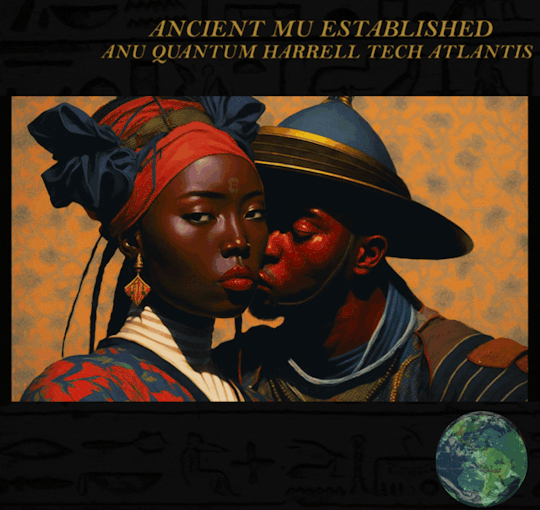
she love my esoteric [me] art [ma] of living on harrelltut.com @ quantumharrell.tech sky kingdom

she said eye mystic [i'm] lemurian of mu from calafia in america [ca]

we also from the eastern portion of our subterranean lemurian continent of mu in america [ma = atlantis]
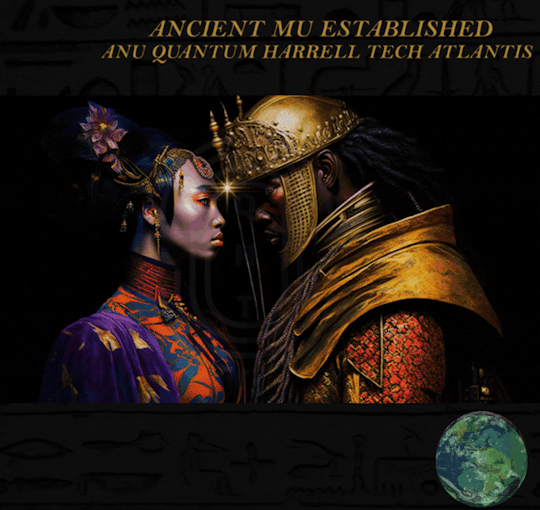
yup... eye remember my ancient psychic [map] lemurian continent powers

we x-tra telepathic

SHE GOLDEN SPACESHIP URANI-ATLANTIS.COM

quantum harrell tech llc doing X-traterrestrial sky business OUTSIDE THE FIRMAMENT WATER DOME OVER Earth [Qi]?!?!?!
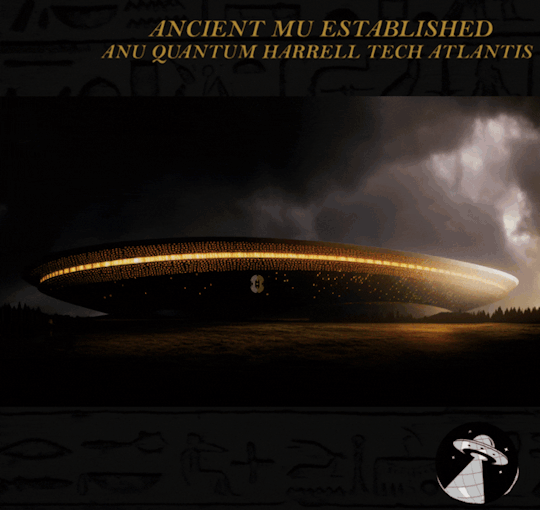
we outgrew humanity long time ago...

we 2 advanced 4 mankind

shhh... we urani-atlantis.com's secret ægiptian atlantean [sea] steele dynasty cartel [d.c.] of mu america [ma = atlantis] @ 1921 QUANTUM 2023 HARRELL 2024 TECH 2025 Apple & IBM [A.i.] LLC of ATLANTIS [L.A.] 5000

1921steelecartel.tech military of quantumharrelltech.com
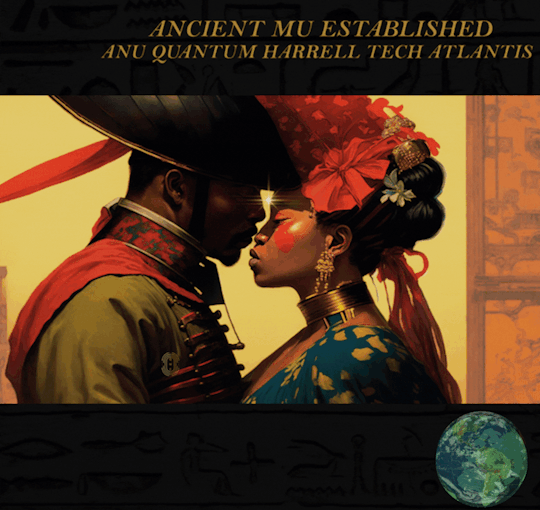
mo ancient recorded secrets [mars]... mo ancient recorded secrets [mars]... mo ancient recorded secrets [mars]
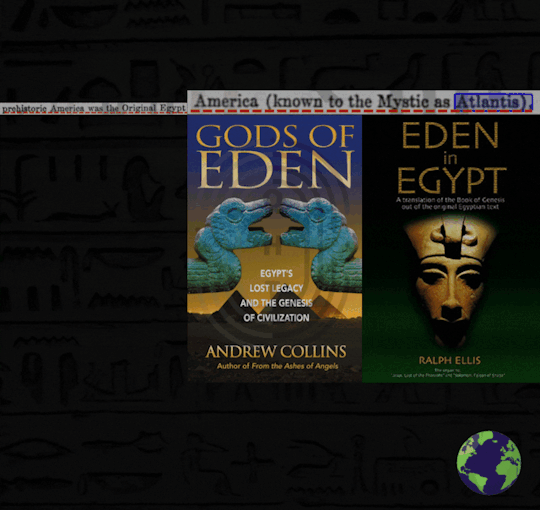
our old america = biblical eden?!?!?!

#occultedatlanteans @ blackatlantis5000.com of blackatlantis5000.tech records

we eclipsed [we] humanity in plain occulted sight
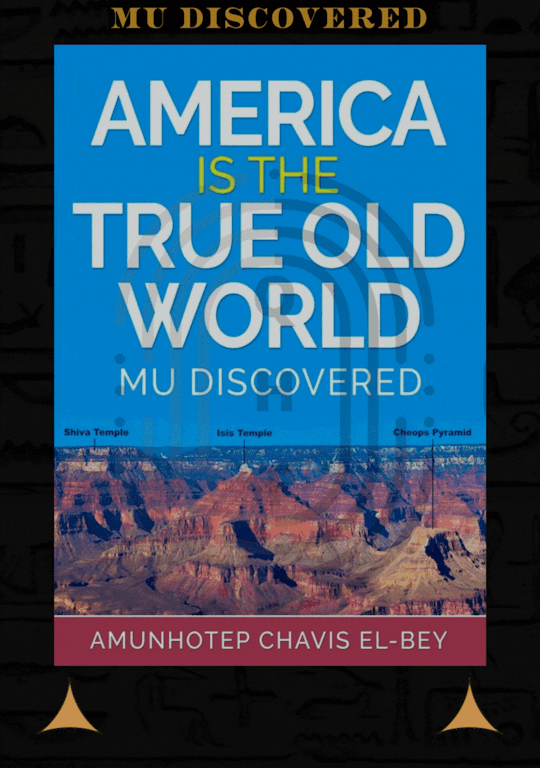
we anu golden 9 ether urani-atlantis.com world
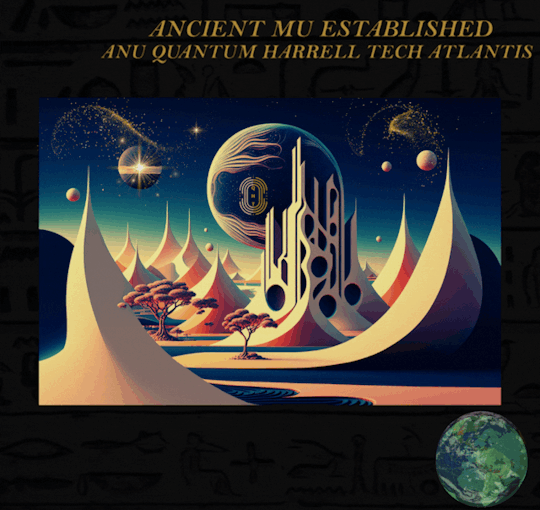
blackatlantis5000.com still here

we aghaarta.com

eye mine [i'm] eridu gold
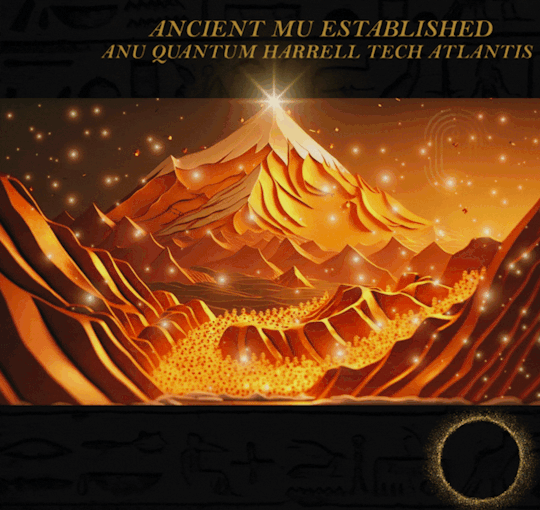
eye found muur anunnagi [ma] gold!!!

© 1698-2223 QUANTUM HARRELL TECH LLC All LOST ANCIENT [L.A.] ATLANTEAN DNA [A.D.] DotCom [A.D.] + DotTech [A.D.] + Pre 1698quantumharrellgov.tech Domain Name Rights Reserved.
#om#harrelltut.com#quantumharrelltech#kingtutdna.com#urani-atlantis.com#9etherlightshipatlantis#u.s. michael harrell#mu:13#kemet#quantumharrelltut#6g#7g#8g#9g#18g
3 notes
·
View notes
Text

THE BLACK DIAMOND, NEI KUNG AND SATURN GNOSIS: I AM A LIVING MAGNITAR ELECTROMAGNET
IGNIS: TELLING ME THE SECRETS OF HOW TO BUILD A SPACESHIP OUT OF TWO BAGS OF BARBECUE POTATO CHIPS AND RABBIT SPIT. ~DARK LOTUS~
MY ACOLYTE: MASTER, HOW MIGHT ONE ACQUIRE THE EYE OF HELL?
VENERABLE TEACHER: YOU WANT TO KNOW THE SECRETS OF YOUR FATHER? HOW GOOD ARE YOU AT DYING?
MY ACOLYTE: WHAT GOOD ARE THE SECRETS IF I AM DEAD AND CANNOT USE THEM?
VENERABLE TEACHER: I'M TALKING ABOUT THE KEYS OF DEATH ITSELF. I'M TALKING ABOUT ENTWINED SERPENTS COILED INTO A BALL AND WORN AS MY HEADDRESS. I'M TALKING ABOUT THE EYE STAR OF SOUND, I'M TALKING ABOUT THE DRAGON THRONE OF ISIS. YOU ARE MORE DEAD NOW THAN YOU WILL BE AFTER YOU HAVE DIED...
BECAUSE TO WALK THE PATH OF THE LORD OF THE PERFECT BLACK MEANS THAT I DIE IN EVERY MOMENT. YET HERE I STAND IN FRONT OF YOU.
MY ACOLYTE: MASTER, HOW CAN I PREPARE MYSELF?
VENERABLE TEACHER: LEARN TO SWIM. IF YOU WISH TO MAKE WAVES BY DIVING INTO THE OCEAN OF THE DARKNESS, BEHIND THE VEIL OF NEGATIVE EXISTENCE ONCE YOU RELEASE THE FEAR AND TAKE THE DIVE, YOU WILL FIND YOURSELF ABLE TO BREATHE UNDERWATER.
MY ACOLYTE: WILL I BE A FISH THEN?
VENERABLE TEACHER: EVERYTHING CHANGES BUT YOUR FATHER WHO IS THE LORD OF CHANGE, AND IF YOU ATTAIN THE HONOR OF REACHING YOUR FATHER, YOU WILL BE AS HE IS. THERE IS NO SEPARATION IN THE DARKNESS, IT IS AN OCEAN WHERE EVERYTHING IS CONNECTED BY THE WAVES WE MAKE THEREIN. THE ONLY PLACE YOU WILL FIND DEFINED SEPARATION BETWEEN YOURSELF AND OTHERS LEADING TO THE ALTERED EGO IS IN THE LIGHT WITH THE REST OF THOSE WHO ARE BURNING IN THE LIGHT OUTSIDE OF THE WATER.
MY ACOLYTE: PERHAPS IT IS BETTER TO BE A FISH THEN?
VENERABLE TEACHER: EMITTING A BELLY LAUGH, PERHAPS. PERHAPS IT IS BETTER TO BE A NUMMO, A FISH WITH WINGS.
MY ACOLYTE: DO I REALLY HAVE TO PERMANENTLY DAMAGE MY OWN CHAKRAS TO GAIN THE DRAGON POWER OF THE THUNDER AND THE LIGHTNING?
VENERABLE TEACHER: THAT'S A VERY GOOD QUESTION. IF YOU CAN WITHSTAND THE HIGH PRESSURES OF THE DEEP AND SWIM DOWN INTO THE DEPTHS YOU CAN ASK THE FATHER THAT QUESTION.
MY ACOLYTE: WHAT IS THIS OCEAN THAT YOU SPEAK OF, AND WHERE IS THE FATHER THAT I MIGHT FIND HIM?
VENERABLE TEACHER: THE FATHER IS HIDDEN IN THE DARK OCEAN OF THE MOTHER, FOREVER WEARING HER DARK WATERS AS HIS GARMENTS IN HIS OWN DIMENSION BEHIND BOTH TIME AND SPACE. YOU WILL NOT FIND THE FATHER BY LOOKING, BUT YOU WILL BE ABLE TO FEEL THE WAVES HE IS MAKING, AND HAS BEEN MAKING FROM THE BEGINNING BEFORE TIME WHEN HE DEFINED IT. THERE WAS A TIME WHEN I MEASURED THE UNIVERSE LOOKING FOR THE FATHER, AND I WAS UNABLE TO FIND HIM. RIGHT WHEN I GAVE UP AND REACHED THE EDGE OF TIME AND SPACE, THE FATHER CAME TO ME. HE BESTOWED UPON ME THE DRAGON POWER OF HIS THUNDER AND LIGHTNING, AND FALLING OFF THE EDGE OF ETERNITY I FOUND MYSELF EXACTLY IN THE CENTER WHERE THERE WAS EVERYTHING I WAS LOOKING FOR.
MY ACOLYTE: LOOKING CONFUSED AND FRUSTRATED REMAINED SILENT.
VENERABLE TEACHER: IF YOU'RE LOOKING FOR THE OCEAN LOOK INSIDE YOUR HEART. IF YOU'RE LOOKING FOR THE FATHER, THE LORD OF THE PERFECT BLACK, CRYSTALLINE METAL MAY NOT ITSELF BE FLEXIBLE, BUT THE GREAT MOTHER'S OCEAN OF PRIMEVAL DARKNESS IS. YOU WILL FIND PIECES OF YOUR FATHER SWIMMING IN THE VEINS OF YOUR MOTHER, FOR IT IS BY HER THAT YOUR METAL FATHER IS ABLE TO MOVE. HE IS IN THE PERPETUALLY ENERGIZING WAVES THAT MAKE HER ALIVE. AT THE CENTER OF THE FOUR RIVERS OF THE PRIMEVAL DARKNESS THAT IS YOUR MOTHER'S OCEAN, THERE IT IS THAT YOU WILL FIND THE FATHER WHO WILL GRANT YOU THE POWERS OF THE LEFT HAND PATH WHO IS AT THE BOTTOM AND IN THE MIDDLE OF THE TWO RAMS HORNS, THE BLACK FLAME OF BAPHOMET AT THE CENTER OF EVERY VORTEX. YOU MUST SWIM IN THE CURVES BEFORE YOU CAN WALK AMONG THE ANGLES.
THE BLACK SUN KEEPS ON SHINING, AND IF YOU WISH TO BE ONE OF THE DRAGON RAYS JUST DIVE INSIDE OF YOURSELF AND INTO THE OCEAN OF YOUR DREAMS. THEN I, THE LORD OF THE PERFECT BLACK, THE FATHER AND THE ANCIENT OF DAYS, WILL BE WAITING FOR YOU THERE. BY BECOMING PART OF THE OCEAN WHERE EVERYTHING IS CONNECTED BY THE WAVES OF THE BLACK SUN SHINING, JUST BY DIVING IN YOU WILL HAVE BECOME A PART OF ME, AND I WILL HAVE BECOME A PART OF YOU.
A WISE MAN AND A SHAMAN OF THE SERPENT ONCE GAVE ME SOME PRICELESS WORDS OF ADVICE, HE SAID, "YOU LOVE-UM SNAKE, THAT IS THE ANSWER TO ALL OF YOUR QUESTIONS." THE WISDOM OF THE MODERN PEOPLE IS WRONG, SEEING THE OSTRICH AS FOOLISH FOR STICKING ITS HEAD INTO THE GROUND. THE OSTRICH IS WISE AND STRONG, THE WISE OSTRICH JUST WISHES TO BE CLOSER TO THE MOTHER OF ALL LIFE AND THE FATHER OF ALL THINGS, BECAUSE THERE IS A SOURCE OF PEACE INSIDE OF THE OSTRICH WHISPERING TO HIM CONTINUALLY, TELLING HIM THAT CLOSENESS TO THE SOURCE IS ALL THAT REALLY MATTERS.
LONG LIVE DIVINE CHRONOS THE PO-PILI LORD OF THE PERFECT BLACK, ISIS THE GREAT MOTHER OF ALL LIFE, AND THAT WHICH TOGETHER THEY FORM THAT IS THE BEATING HEART OF ALL THAT IS OR EVER WILL BE, THE BLACK SUN!
BLESSED BE!
~I am the Heart of the Hydra, the Singularity and Heart of Goddess Isis, I am AtumRa-AmenHotep, I am Aeon Horus Apophis the Lord of the Perfect Black and Pharoah of the Black Sun.
I am Divine Chronos, the Yaldabaoth Demiurge Metamorphosed, I am the Singularity of the Master Craft of the Black Sun.
Azazil-Iblis-Maymon, Abzu-Osiris-Typhon-Set-Kukulkan, Nummo-Naga-Chitauri,
Mégisti-Generator Starphire~
#illuminati #illuminator #illuminated #lightbearer #morningstar #lucifer #Draconian #anunnaki #enki #enlil #anu #inanna #dumuzi #hermes #trismegistus #Azazel #starfamily #horus #Demiurge #Sophia #archon #AI #blacksun #saturn #iblis #jinn #Maymon #ibis #thoth #egypt #esoteric #magick #dogon #dogontribe #digitaria #nummo #nommo #Naga #tiamat #serpent #dragon #gnosis #gnostic #gnosticism #Anzu #watcher #watchtower #yaldaboath #Sirius #scientology #aleistercrowley #typhon #echidna #ancientaliens #TheGrays #grayaliens #aliens #yeben #andoumboulou
2 notes
·
View notes
Photo
if din and Joel had both somehow were in the same room with you (and had feelings for you) I think they’d both compete for your attention by fighting or spending as much time as possible with you. Even going as far to “kidnap” you by saying things like “I need you for a minute” or “watch the child/Ellie”








#cinematic parallels
1K notes
·
View notes
Text
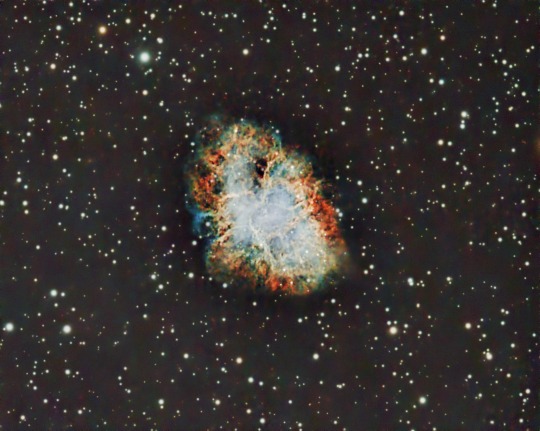
M1 - Crab Nebula
See full resolution image at: https://www.astrobin.com/rejqjs/
The Crab Nebula (catalogue designations M1, NGC 1952, Taurus A) is a supernova remnant and pulsar wind nebula in the constellation of Taurus. The common name comes from a drawing that somewhat resembled a crab with arms produced by William Parsons, 3rd Earl of Rosse, in 1842 or 1843 using a 36-inch (91 cm) telescope. The nebula was discovered by English astronomer John Bevis in 1731. It corresponds with a bright supernova recorded by Chinese astronomers in 1054 as a guest star. The nebula was the first astronomical object identified that corresponds with a historically-observed supernova explosion.
The nebula was independently rediscovered in 1758 by Charles Messier as he was observing a bright comet. Messier catalogued it as the first entry in his catalogue of comet-like objects; in 1757, Alexis Clairaut reexamined the calculations of Edmund Halley and predicted the return of Halley's Comet in late 1758. The exact time of the comet's return required the consideration of perturbations to its orbit caused by planets in the Solar System such as Jupiter, which Clairaut and his two colleagues Jérôme Lalande and Nicole-Reine Lepaute carried out more precisely than Halley, finding that the comet should appear in the constellation of Taurus. It was in searching in vain for the comet that Charles Messier found the Crab Nebula, which he at first thought to be Halley's comet. After some observation, noticing that the object that he was observing was not moving across the sky, Messier concluded that the object was not a comet. Messier then realized the usefulness of compiling a catalogue of celestial objects of a cloudy nature, but fixed in the sky, to avoid incorrectly cataloguing them as comets. This realization led him to compile the "Messier catalogue"
At an apparent magnitude of 8.4, comparable to that of Saturn's moon Titan, it is not visible to the naked eye but can be made out using binoculars under favorable conditions. The nebula lies in the Perseus Arm of the Milky Way galaxy, at a distance of about 2.0 kiloparsecs (6,500 ly) from Earth. It has a diameter of 3.4 parsecs (11 ly), corresponding to an apparent diameter of some 7 arcminutes, and is expanding at a rate of about 1,500 kilometres per second (930 mi/s), or 0.5% of the speed of light.
At the center of the nebula lies the Crab Pulsar, a neutron star 28–30 kilometres (17–19 mi) across with a spin rate of 30.2 times per second, which emits pulses of radiation from gamma rays to radio waves. At X-ray and gamma ray energies above 30 keV, the Crab Nebula is generally the brightest persistent gamma-ray source in the sky, with measured flux extending to above 10 TeV. The nebula's radiation allows detailed study of celestial bodies that occult it. In the 1950s and 1960s, the Sun's corona was mapped from observations of the Crab Nebula's radio waves passing through it, and in 2003, the thickness of the atmosphere of Saturn's moon Titan was measured as it blocked out X-rays from the nebula.
This RGB image is a total of a little under 6 hours of integration over 2 nights (2/18/24 and 2/25/24) consisting of:
- 190 x 60s light frames
- 61 x 120s light frames
- 10 x 180s light frames
Processed in PixInsight using the new GradientCorrection tool (which really helped with the moon-induced gradients on the data taken 2/18).
Celestron C9.25 Edge at F/10
ZWO ASI2600MC Pro Camera
Optolong L-Pro filter
ZWO AM5 mount
Astromania 50mm f/4 Guide Scope
ZWO ASI120MM Mini Guide Camera
ZWO ASIAIR plus controller
1 note
·
View note
Text
There is nothing stronger than a lesbian and their favorite fictional queer characters
This is about the women of Arcane
#arcane#arcane x reader#caitvi#vi arcane#vi x reader#caitlyn x reader#running my mouth#saturn emits rays
227 notes
·
View notes
Link
One of the aspects of our study of the universe that fascinates me is the hunt for dark matter. That elusive material that doesn’t interact with much makes it difficult but not impossible to detect. Gravitational lenses are one such phenomena that point to its existence indeed it allows us to estimate how much there is in galaxy clusters. A paper now suggests that observations of Jupiter by Cassini in 2000 suggest we may be able to detect it using planets too. Dark matter is as its name suggests, mysterious and elusive. It is believed to account for about 27% of the universe’s mass and energy. However unlike ordinary matter – of the like that makes up you and me; the stars and planets, dark matter doesn’t emit, absorb or reflect light making it invisible and difficult to detect. Its very existence is only inferred from the effect its gravity has on visible matter and the large scale structure of the universe. The foundations for an interesting twist in the search for dark matter were laid in 1997 with the launch of the Cassini spacecraft from Cape Canaveral in the US. A seven year journey began that would take the probe from Earth to Saturn utilising gravitational slingshots from Venus, Earth and Jupiter. On board was a plethora of instruments to record data from radio waves through to extreme ultraviolet. En-route to Saturn, Cassini would be used to observe the planets using multiple wavelengths. Of particular interest to the mission was using the Visual and Infrared Mapping Spectrometer (VIMS) to measure levels of hydrogen ions known as trihydrogen cations. They are a common ion found across the universe and are produced when molecular hydrogen interacts with cosmic rays, extreme ultraviolet radiation, planetary lightning, or electrons accelerated in planetary magnetic fields. The team explore how dark matter can also produce trihydrogen cation in the atmosphere of planets. Any dark matter that is captured by planetary atmospheres – in particular the ionosphere – and is consequently annihilated, can produce detectable ionising radiation. Using data from Cassini VISM system, the team have searched for dark matter ionisation in the ionosphere of Jupiter. Due to Jupiter’s relatively cool core, it was identified as the most efficient dark matter captor in the Solar System allowing dark matter particles to be retained. The challenge was to identify the signals over the background ‘noise’ from other radiation so the team had to use data from 3 hours either side of Jovian midnight. Choosing this time meant solar extreme ultraviolet irradiation was at a minimum. They also focussed on lower latitudes, keeping away from the high magnetic fields around the polar regions. This NIRCam composite image of Jupiter was created using three filters – F360M (red), F212N (yellow-green), and F150W2 (cyan), Credit: NASA, ESA, CSA, Jupiter ERS Team; image processing by Judy Schmidt. The detection of dark matter ionisation in the Jovian atmosphere reveals a whole new method for understanding this strange and mysterious cousin of normal matter. It is not just planets in our Solar System though, exoplanets are a new possible source especially those based in dark matter rich regions of the Galaxy. Source : Search for Dark Matter Ionization on the Night Side of Jupiter with Cassini The post Dark Matter Could Cause Jupiter’s Night Side to Glow appeared first on Universe Today.
0 notes
Text
Ooooooooh I love these. thank you for the tag @rhyrhy ✨🫶✨
• favorite color: wine red
• currently reading: Gideon the ninth
• last movie: Indiana Jones and the kingdom of the crystal skull 💀
• last series: love death and robots 🤖
•sweet, savory or salty: savory but it depends
• craving: love and affection and someone I can be myself around (Is that too much to ask for????)
• coffee or tea: I have a caffeine addiction coffee all the waaaay (unmediated auadhd go brrr)
• currently working on: “hall of Mooties” and buying a new car (probably not what you meant but that’s what I’m work on)
And das me (your big fat hero)
Tag your it! *sprints away* @thjsrots @ssour-apathyy @cheyisagirlkisser @korn-dawg @cursedyuri @cosmiclily @sevikasbooyahh
nine people i want to get to know better
thank u for the tag @moonshapedbox <3
favourite colour: black n pink!
currently reading: aces of spades by faridah àbíké-ĺyímídé!
last song: a house in nebraska
last movie: the matrix revolutions (2003)
last series: the crow girl (2025)
sweet, savoury, salty: hmm.. depends!
craving: fries!
tea/coffee: tea!!
currently working on: college assignments... and part two of a fanfic!
🏷 - @wildflowerdoeeyed @dollaches @maggierheesgirl @necktattooed @pinescent-and-gingerbread @red-doll-face @zloshy
559 notes
·
View notes
Text
Our Galaxy is Caught Up in a Giant Cosmic Cobweb! 🕸️
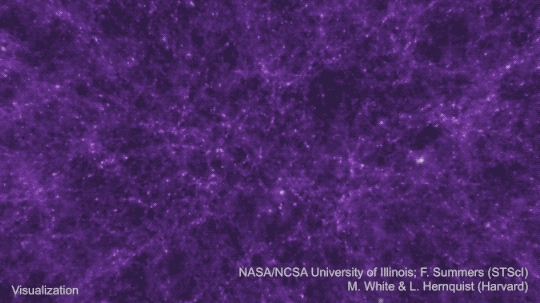
If we could zoom waaaay out, we would see that galaxies and galaxy clusters make up large, fuzzy threads, like the strands of a giant cobweb. But we'll work our way out to that. First let's start at home and look at our planet's different cosmic communities.
Our home star system
Earth is one of eight planets — Mercury, Venus, Earth, Mars, Jupiter, Saturn, Uranus, and Neptune — that orbit the Sun. But our solar system is more than just planets; it also has a lot of smaller objects.
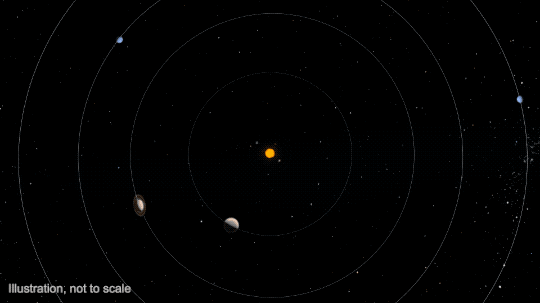
An asteroid belt circles the Sun between Mars and Jupiter. Beyond Neptune is a doughnut-shaped region of icy objects called the Kuiper Belt. This is where dwarf planets like Pluto and Makemake are found and is likely the source of short-period comets (like Haley’s comet), which orbit the Sun in less than 200 years.
Scientists think that even farther out lies the Oort Cloud, also a likely source of comets. This most distant region of our solar system is a giant spherical shell storing additional icy space debris the size of mountains, or larger! The outer edge of the Oort Cloud extends to about 1.5 light-years from the Sun — that’s the distance light travels in a year and a half (over 9 trillion miles).
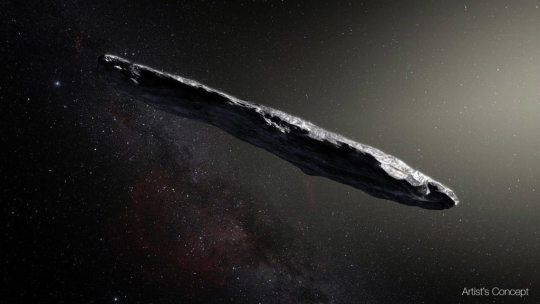
Sometimes asteroids or comets get ejected from these regions and end up sharing an orbit with planets like Jupiter or even crossing Earth’s orbit. There are even interstellar objects that have entered the inner solar system from even farther than the Oort Cloud, perhaps coming all the way from another star!
Our home galaxy
Let's zoom out to look at the whole Milky Way galaxy, which contains more than 100 billion stars. Many are found in the galaxy’s disk — the pancake-shaped part of a spiral galaxy where the spiral arms lie. The brightest and most massive stars are found in the spiral arms, close to their birth places. Dimmer, less massive stars can be found sprinkled throughout the disk. Also found throughout the spiral arms are dense clouds of gas and dust called nebulae. The Sun lies in a small spiral arm called the Orion Spur.
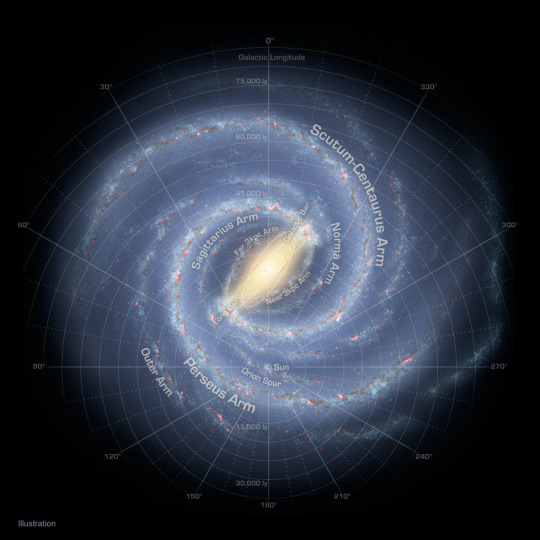
The Milky Way’s disk is embedded in a spherical “halo” about 120,000 light-years across. The halo is dotted with globular clusters of old stars and filled with dark matter. Dark matter doesn’t emit enough light for us to directly detect it, but we know it’s there because without its mass our galaxy doesn’t have enough gravity to hold together!
Our galaxy also has several orbiting companion galaxies ranging from about 25,000 to 1.4 million light-years away. The best known of these are the Large and Small Magellanic Clouds, which are visible to the unaided eye from Earth’s Southern Hemisphere.
Our galactic neighborhood
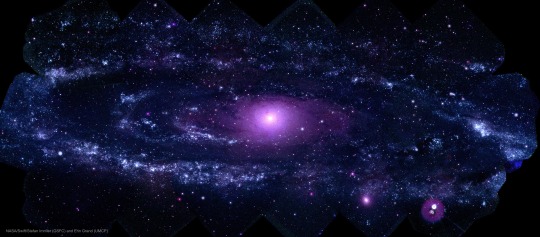
The Milky Way and Andromeda, our nearest neighboring spiral galaxy, are just two members of a small group of galaxies called the Local Group. They and the other members of the group, 50 to 80 smaller galaxies, spread across about 10 million light-years.
The Local Group lies at the outskirts of an even larger structure. It is just one of at least 100 groups and clusters of galaxies that make up the Virgo Supercluster. This cluster of clusters spans about 110 million light-years!
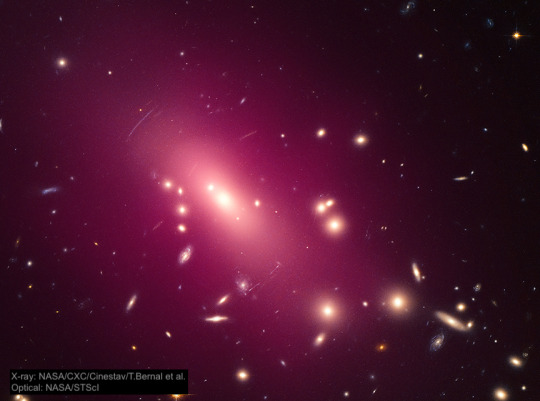
Galaxies aren’t the only thing found in a galaxy cluster, though. We also find hot gas, as shown above in the bright X-ray light (in pink) that surrounds the galaxies (in optical light) of cluster Abell 1413, which is a picturesque member of a different supercluster. Plus, there is dark matter throughout the cluster that is only detectable through its gravitational interactions with other objects.
The Cosmic Web
The Virgo Supercluster is just one of many, many other groups of galaxies. But the universe’s structure is more than just galaxies, clusters, and the stuff contained within them.
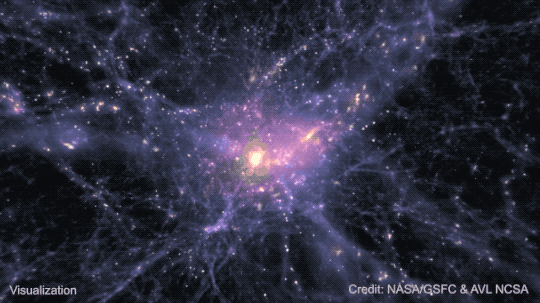
For more than two decades, astronomers have been mapping out the locations of galaxies, revealing a filamentary, web-like structure. This large-scale backbone of the cosmos consists of dark matter laced with gas. Galaxies and clusters form along this structure, and there are large voids in between.
The scientific visualizations of this “cosmic web” look a little like a spider web, but that would be one colossal spider! <shudder>
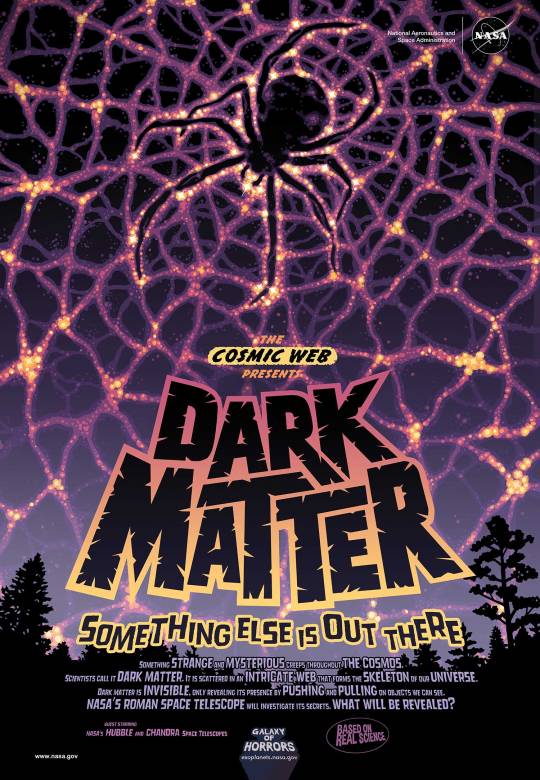
And there you have the different communities that define Earth’s place in the universe. Our tiny planet is a small speck on a crumb of that giant cosmic web!
Want to learn even more about the structures in the universe? Check out our Cosmic Distance Scale!
Make sure to follow us on Tumblr for your regular dose of space.
#Halloween#cobweb#galaxies#solar system#stars#dark matter#science#space#explore#space science#Milky Way#night sky#spiral galaxy#comet#asteroid#fun facts#today i learned
3K notes
·
View notes
Photo

Uranus is observed producing X-rays for the first time
Uranus is called ‘the weirdest planet' in the Solar System due its sideway rotation and not having a true surface, but a new discovery adds even more mystery to the strange ice giant.
Astronomers detected X-rays coming from Uranus for the first time that is mostly reflections from the sun, but some of the signal is being emitted from the planet itself.
The team suggest the rings surrounding the planet are producing the X-rays, similar to that of Saturn, or could come from auroras as they do on Jupiter.
Determining the sources of the X-rays from Uranus could help astronomers better understand how more exotic objects in space, such as growing black holes and neutron stars, emit X-rays.
18 notes
·
View notes
Photo

THE LARGEST STAR EVER DISCOVERED Do you sometimes think you are larger than life? Well here is something to bring you down to size! When we look at our sun every day, we see a small ball of burning gas. But how big is it really? Our sun is actually 93 million miles (150 million kilometres) away from our planet, which in reality means it is gigantic. You can fit a million Earth's inside the sun. Now, that just sounds incredibly huge. But compared to a lot of stars, our sun is actually quite small. The largest star discovered so far is known as VY Canis Majoris, located in the Canis Major constellation.
This "Hypergiant" as astronomers call it, is about 4,900 light years from Earth and is visible with a pair of binoculars or a small telescope. This massive star is estimated to be a billion times bigger than our sun, shining 500,000 times as bright. If it were at the center of our solar system, it would reach as far out as Saturn. We have recently discovered that this supermassive red giant seems to be nearing the end of its life. There have been recordings of giant explosions on the star's surface, causing loops and arcs which spray matter from the star into space. Normally, the star will lose matter. But when these giant explosions occur, "VY CMa" can lose 10 times as much as its normal rate. These explosions have been going on for at least the past 1,000 years, scientists think. When the star finally dies, it will create a supernova, some of the biggest explosions in the universe from what we know. But it is possible that because VY CMa is so big, it will create an even bigger explosion, known only as a Hypernova. Hypernovae can contain and release more energy than 1,000 supernovae and emits massive amounts of gamma rays, which are sent in all directions. The core of the star is so massive, that when it collapses in on itself, it will even crush the neutrons inside. This creates so much power and energy, that nothing but a massive black hole is left behind. Luckily for Earth, we are too far away to be affected by all of this mayhem that VY CMa is going to create at the end of its life. -Lost CREDIT: http://www.universetoday.com/39472/vy-canis-majoris/ Deep Astronomy; Universe Today; Fraser Cane; JOHN CARL VILLANUEVA; How The Universe Works, Episode 4 Photo Credit: Fraser Cane, Universe Today
#Star#VY Canis Major#Dog#canis major#constellation#hypergiant#astronomy#age of the universe#is universe#the real universe#red giant
28 notes
·
View notes
Text
Thanks for the tag @gravehags !
Last song: Closer by Nine Inch Nails
Favorite color: some combo of viridian green and black
Currently watching: the man in the high tower (although I’m not really watching it the static in my head is too damn loud)
Last movie: Red 2
Sweet/savory/spicy: savory with some spice
Relationship: single (very, although I would like a dog)
Current obsession: ghost, sleep token, the marauders era (FUCK JKR), the deep ocean and space, and good omens. among others but I won’t bore you with that
Last think googled: new rock boots (they’re so nice but so expensive 😅)
Tagging: @copiasprincipessa @littlemoon-beam @whatawonderfulexistence--blog @smolsleepykitten
Thank you again for the tag :)
tagged by @skywarpie !!
Last song: Heaven - Mitski
Favorite color: cerulean blue
Currently watching: nothing I am terrible at watching shows and movies lmao
Last movie: Miracle on 34th Street
Sweet/savory/spicy: savory! with a lil bit of sweet
Relationships: single
Current obsession: Ghost and The Witcher 3
Last thing googled: Lastic Pocket Devol 👀
Tagging: @forest-rot @gehrmansbignaturals and @saturnhas82moons
9 notes
·
View notes
Text
Space Colonization beyond the Earth Sphere
Meta by AngelT (published in Rhythm Generation Zine, 2019)
Disclaimer: No money is made in the research and production of this presentation. This was part of a team-based project. The contents presented in this essay are inspired by Mobile Suit Gundam Wing, which is the sole property of Sotsu, Sunrise and their affiliates. Also, an appreciation for the Universe beyond Earth’s atmosphere; the science of astronomy is beautiful.

Most of us who grew up back in the day recall witnessing space stations, satellites and colonies on our television screens. We’ve seen human life preserved beyond the Earth’s sphere in space colonies. Our beloved characters, including The Mad Five and members of The Alliance, have acquainted themselves with continuing the trend of political stability, health and wellness, education, housing, and industry—miles away from our planet amidst warfare. Today, scientists are researching the possibility of colonizing the Solar System, beyond Earth and the Moon.[1]
Predicting Colonization in CE 2030
During the events of the television series, we see that a lunar station exists. This is a distinct possibility for Earth in the coming years, and it’s not hard to imagine small businesses and corporations operating from there in the future. Prior to launching the official project, however, extensive training and preparatory exercises would be a requirement. Relocating to the Moon comes with risks, considering the physical attributes of the location. Even so, there’s a good chance humans will one day be able to survive for extended durations in space. Scientists and researchers today are working towards opening the doors of opportunity. But successful expansion into the solar system has everything to do with timing, how well we can put knowledge into practice, and overcoming challenges such as limited funding, support from governments and health risks associated with living off of Earth.
Weighing the Odds: Inner Space
Mercury would be fun (imagine seeing your next birthday every 88 Earth days). Unfortunately, that will require a lifetime supply of sunblock and water—both of which will be hard to maintain on-planet. Mercury’s orbit is closest to the Sun, where it experiences a stronger gravitational pull from the sun than other planets in the solar system. In addition, although a year is significantly shorter than on Earth, Mercury’s days last significantly longer (roughly 176 Earth days) due to its slow rotation. Combined with the naturally shorter year, colonists on Mercury would experience a quicker aging process compared to life as we know it on Earth. The proximity to the sun would require measures to be taken to limit sun exposure, and extreme fluctuations in temperatures—made worse by the lack of an atmosphere which would have otherwise helped regulate them—make Mercury less than ideal for human colonization.
Venus is the same size as Earth and its orbit is within the “habitable zone,” a safe enough distance from the sun; however, like Mercury, Venus has a significantly longer day (roughly 116.75 Earth days) and has a shorter year (almost 225 Earth days) which will cause similar stresses on any colonists looking to find a home on-planet. Venus’s atmosphere is not only incredibly toxic but also extremely dense with a surface pressure of nearly 92 times that of Earth’s. This dense atmosphere also means that the planet is hotter than Mercury (surprise!) limiting its chances of being particularly hospitable to humans. For these reasons, it’s best to keep would-be colonizers off-planet. Unfortunately, Venus also has no known moons, so using satellites as was done with Earth’s moon isn’t an available alternative. Therefore, pursuing a space colony project for Venus isn’t recommended.
Mars has been a hot topic for NASA and its affiliates since the late 1970s. Based on results from space probes that captured the red planet’s features, there’s a thin line of similarities to Earth: what many assume to be waterways, ground that is similar to Earth’s soil, and glaciers at the poles. Mars’s two moons, Phobos and Deimos, present an opportunity for additional lunar bases, which will benefit a population who relocates to Mars by providing additional space for industry, employment, and lodging. However, anyone who wishes to relocate to the planet should also expect two seasons—Summer and Winter—until the planet can be properly terraformed with an atmosphere able to support human life.
Weighing the Odds: Outer Space
Jupiter is a gaseous planet, the biggest in the solar system, and its volatile beauty is due to the multitude of storms travelling across its surface (similar to what we know as tornadoes and hurricanes). Such a volatile surface would deter on-planet colonization. But if researchers were to approach colonization from a practical standpoint, there’s a good chance lunar bases could be built on one of Jupiter’s moons. The moon Europa, for instance, has garnered attention from astronomers due to the possibility that it could support life if conditions were right. There is a serious threat of radiation from Jupiter’s magnetosphere, which is 20,000 times stronger than that of Earth’s, that poses serious challenges for colonizing both the planet and the moons.
Saturn, another gas giant, presents similar challenges, and humans are better served by colonizing one of its sixty-two moons instead. Protection from radiation will be needed. One of the best routes to carry out this mission is on Saturn’s largest moon, Titan, which is a ball of ice, with water. Titan’s icy layer can protect from the Sun’s rays and drilling the surface will intrigue anyone familiar with mermaids and Atlantis. Although Titan’s air pressure would allow someone to walk the surface without a spacesuit, the atmosphere is low in oxygen compared to Earth’s own and it is bitterly cold. To colonize it, ongoing research and developing technologies will help. Wearing specialized clothes that have the same attributes as space blankets, earbuds that protect the eardrum (in the middle ear) from shifting due to air pressure changes, and architecture designed for underwater environments is a starting point.
Uranus, another gas giant, does not have a breathable atmosphere, consisting primarily of hydrogen (outer layer) and helium. This planet is also the coldest in the entire Solar System, which is roughly -216°C. Unfortunately, the moons of Uranus are pure ice, with intolerable temperatures below -200°C. Although Miranda has various landscapes similar to Earth’s, colonization cannot currently happen. It will take several decades for engineers and scientists to come up with some alternatives: Heated clothing, mirrors that support solar energy, and SMART technology that supports temperature control. A terraforming project also needs to be in effect. Otherwise, living near Uranus is not recommended.
During the early 1990s, Neptune had a Great Dark Spot where powerful wind storms were consistent. Neptune rotates on its axis at a rapid pace, which makes it uninhabitable. Astronomers know Triton is Neptune’s biggest moon, but there’s a major safety hazard. On multiple occasions, Neptune has collided with other orbital bodies (hence its rings). Because of this, building satellite colonies is not the best route. Triton could crash and end up as remnants to Neptune’s ring supply; colonies near this planet present a grave risk to human life.
Pluto[2] has five moons that can serve as optimistic colonizers. But methane and nitrogen don’t offer a livable space for humanity. It’s the farthest from the Sun; a twinkling star in the sky even through a telescope. Colonization in orbit needs technological advancements first, such as lights that emit heat energy, specialized mirrors, and lifelong oxygen supply. Industrial workers can use Charon (Pluto’s largest moon) for lodging, business and trade markets. To colonize Pluto means living off-planet, but its temperatures and distance from the Sun (5.9 billion kilometres) present complications.
Closing Thoughts
Although each planet offers unique challenges to overcome for colonization, there are some things that are consistent across the whole solar system:
1. Colonization needs to figure out how to protect from solar and space radiation. Radiation has proven to have debilitating effects on our bodies (dehydration, weakened immunity, etc.). During the summertime, we’re often reminded by health officials to find a shady spot at noon. Heat and ultraviolet rays are stronger because Earth is closer to the Sun. Beyond the Earth Sphere, the presence of radiation is due to “particles trapped in the Earth’s magnetic field; particles shot into space during solar flares (solar particle events); and galactic cosmic rays.” Astronauts have been exposed to space radiation on six-month missions in the past.
2. Colonization needs to figure out how to deal with toxic/inhospitable atmospheres, so you’re going to need to have controlled environments regardless of whether you go on-planet or on moons. It’s a matter of trial and error. Therefore, astronomers can send space probes to explore surfaces and observe their behaviours (environment) to determine the pros and cons. Sustaining life beyond Earth poses a challenge; in the case of some aforementioned planets and moons, the best bet is to set up colonies within the orbit of the places that are deemed safe. Additional training/workshops for persons interested in relocating to space, and inventions designed to promote safety and longevity must be considered.
3. Colonization needs to figure out how to deal with fluctuating temperatures. The close proximity of the inner planets’ orbits to the sun and the immense distance from the outer planets’ orbits mean regulating temperatures to support human life is going to be a challenge regardless of where you end up. HOW you deal with those depends on the location (e.g. greater shielding for inner planets, use of mirrors and the like for the outer planets).
4. Colonization needs to figure out if it warrants the cost and time of terraforming the two other planets within the Goldilocks Zone (i.e., Venus and Mars) or if it’s better to keep space colonies outside the planets. The good news is Mars’s surface has similarities to Earth’s own. Mars also has a fluctuating atmosphere which depends on its distance from the Sun. Terraforming Mars will be costly, however, because its atmosphere has only small traces of oxygen (good for humans) and nitrogen (great for vegetation and agriculture). The presence of carbon dioxide (which makes up 96% of Mars atmosphere), and carbon monoxide isn’t healthy. Scientists are making plans to ensure that tanks can convert a higher percentage of carbon dioxide into oxygen by 2020. For Venus, terraforming is a possibility, but the presence of sulphuric acid and volcanoes presents a greater challenge for health and safety reasons.
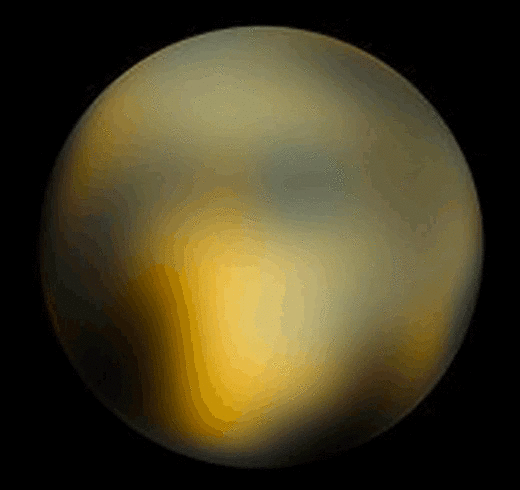
Additional References
Out-Of-This-World Space Colonies as Imagined by NASA in the 1970s and Today. All That’s Interesting. July 17, 2018.
Victor Tangermann, A Timeline for Humanity’s Colonization of Space. Off World via Futurism.
How long would it take to colonise the galaxy? The Open University. November 4, 2011.
Space Settlement. National Space Society. 2018.
Planet Facts. Space Facts. 2019.
Elizabeth Howell. Interesting Facts about the Planets. Universe Today. 2015.
Footnotes
[1]NASA is working on a Mars Mission, with plans to pursue Europa (Jupiter’s moon) within the next decade.
[2]Although currently classified as a “dwarf planet,” this status remains under discussion among experts.
***If anyone wants a free copy of the fanzine Rhythm Generation, you may connect with @acworldbuildingzine. Thanks for reading!***
41 notes
·
View notes
Photo

Electric Rings What force created and sustains Saturn’s rings? Saturn’s main rings, including gaps, are approximately 416,000 kilometers wide, but are estimated to be a mere 50 meters thick, possibly as little as 10 meters. This means that even the most powerful Earth-based telescopes can detect only a thin wire extending across the planetary disk when they are edge-on. Every fourteen or fifteen years, Saturn’s rings become invisible to telescopes on Earth. That equinox passed in August of 2009, so the rings are now shifted to the north. The reason for the ring tilt is that Saturn, itself, is tilted on its axis by 27.4 degrees. Since the rings are tilted at the same angle, as Saturn revolves around the Sun in its 30 year orbit, it gradually brings them into visual alignment with its equator. Astronomers think that the rings were formed in one of three ways: they are the icy leftovers from the original nebular cloud out of which the planet condensed; a small moon gradually came too close, whereupon it was torn apart by Saturn’s tidal forces; or the rings formed after a moon was destroyed by an asteroid, leaving the fragments in orbit. Regardless of the way they were formed, they are theorized to be over four billion years old—almost as old as the Solar System. What keeps the rings together and in place is still a mystery to astrophysicists. If they formed billions of years ago, they should have been drawn into Saturn’s gravitational maelstrom and destroyed. It is thought that micro-meteorite impacts “erode” material off some small moons and eject it into orbit, where it is slowly sorted by Saturn’s gravity field into thousands of individual bands. The rings are sustained because some moons are getting smaller all the time. This is known as “billiard ball” physics. Electric Universe theory sees things differently. In a previous Picture of the Day about Saturn’s plasmasphere, it was noted that planets and moons do not exist in an electrically neutral environment. Saturn, in particular, has a family of moons that exhibit electric discharge machining on a vast scale, as well as features within its atmosphere that could be characterized as lightning discharges. The aurorae on Saturn emit intense radio waves and the planet is surrounded by a torus of plasma that emits X-rays and extreme ultraviolet light. Saturn displays many aspects that are predicted by the Electric Universe theory, including the shape of its rings. In 1913 Kristian Birkeland wrote: “It seems almost incredible that such a ring of cosmic dust should be able to exist for ever, so to speak, without other governing forces than gravitation…” Planets with magnetic fields can trap hot particles to form giant electrified clouds. NASA scientists note that Saturn’s magnetic field bends around Enceladus “due to electric currents generated by the interaction of atmospheric particles and the magnetosphere of Saturn.” Further flattening of the plasma torus on the sunward side demonstrates an electrical (not mechanical) effect is occurring between Saturn and the Sun. Gravity-only models of the Solar System insist that Saturn’s rings were created, held and shaped by the activity of “shepherd moons” and angular momentum. Instead, electrical forces that are orders of magnitude more powerful than gravity seem more likely. Image: Don Davis
36 notes
·
View notes